Remembering Blanche M. G. Linden, Ph.D. (1946 – 2014)
“This fall marks the 25th anniversary of Silent City on a Hill: Picturesque Landscapes of Memory and Boston’s Mount Auburn Cemetery first published in 1989 by Blanche M. G. Linden, Ph.D. (1946 – 2014). We are saddened by the recent loss of our friend Blanche and are forever grateful for her scholarship on the founding and early decades of Mount Auburn Cemetery.
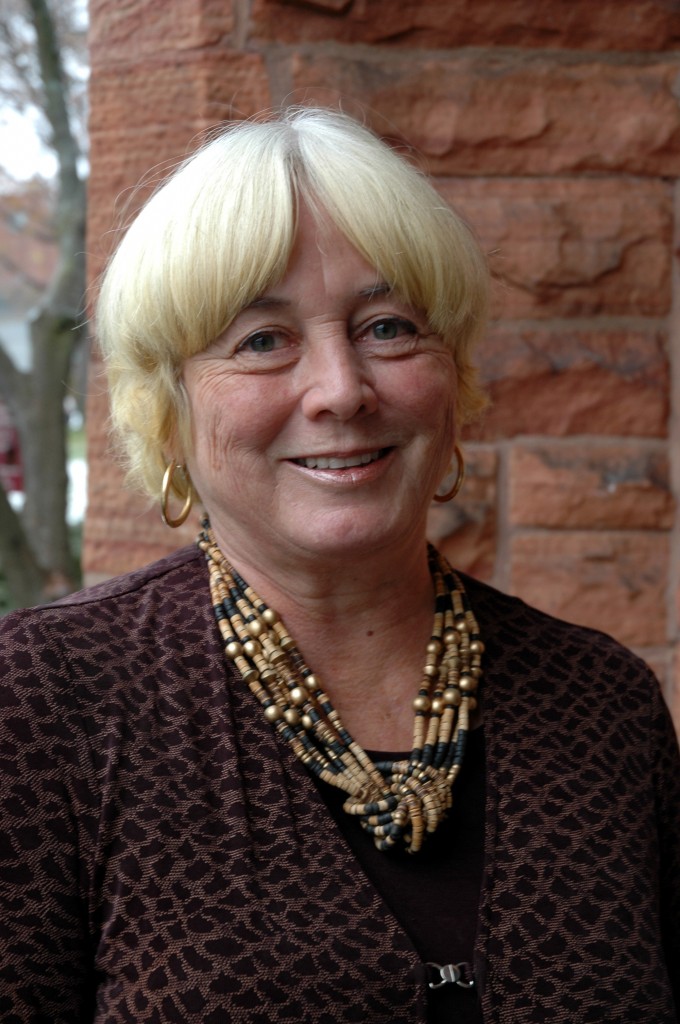
Blanche Marie Gemrose Linden was born July 4, 1946, in Battle Creek, Michigan, the beloved daughter of the late George and Lauretta Gemrose. A longtime resident of Watertown, Massachusetts, she moved to Fort Lauderdale following her retirement and was a Florida resident for almost twenty years. Education and writing were her life; she was an indefatigable researcher and historian. After receiving a Bachelor’s degree in French from the University of Michigan, Blanche completed a Master of Arts in history from the University of Cincinnati, where she found her lifelong work as a scholar of cemeteries and American culture. She received her doctorate in the History of American Civilization from Harvard University where she began her study of the history of Mount Auburn, culminating in the definitive Silent City on a Hill: Picturesque Landscapes of Memory and Boston’s Mount Auburn Cemetery.
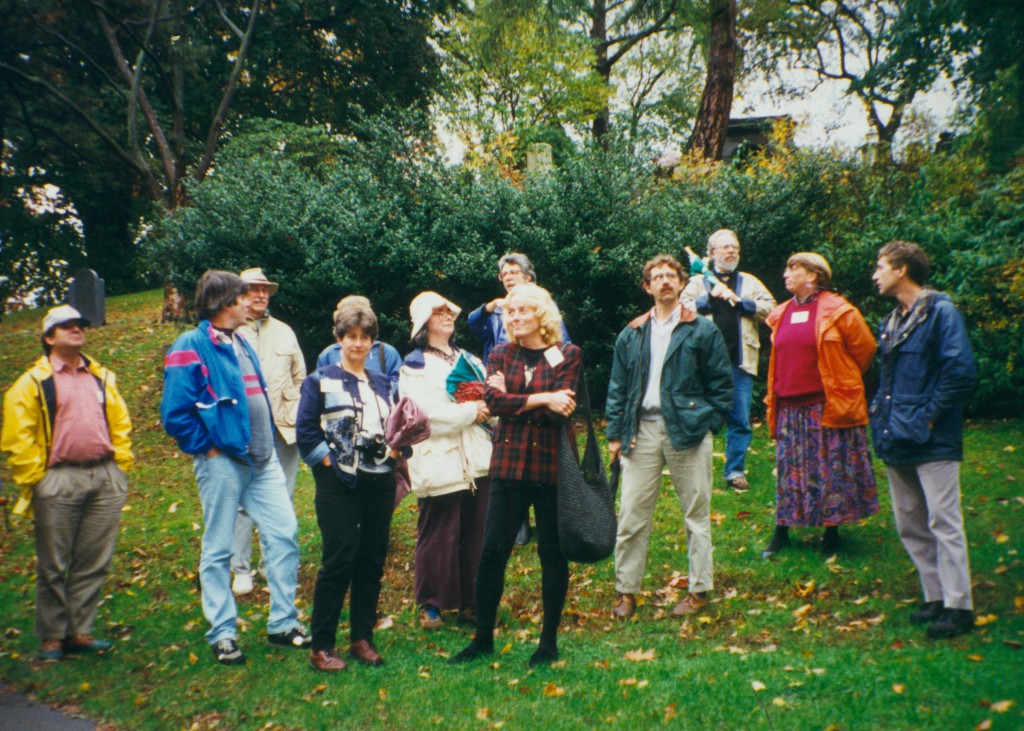
Blanche leads a tour for Mount Auburn staff and associates at the Cemetery in 1995.
 Silent City focused on the intellectual and cultural origins for Picturesque design that Mount Auburn was founded on and originally started as Linden’s doctoral dissertation when she was a Harvard University Ph.D candidate. She then expanded the dissertation into a book that studies the philosophical reasons why the Cemetery was created and gives a detailed description of the growth of Mount Auburn. It won the Historic Preservation Book Award and the American Society of Landscape Architects Merit Award.
Silent City focused on the intellectual and cultural origins for Picturesque design that Mount Auburn was founded on and originally started as Linden’s doctoral dissertation when she was a Harvard University Ph.D candidate. She then expanded the dissertation into a book that studies the philosophical reasons why the Cemetery was created and gives a detailed description of the growth of Mount Auburn. It won the Historic Preservation Book Award and the American Society of Landscape Architects Merit Award.
In 2007 a redesigned and updated paperback version of Silent City was republished by the American Society of Landscape Architects.
Other significant works by Blanche Linden include Spring Grove: Celebrating 150 Years; Boston Freedom Trail; and American Women in the 1960s: Changing the Future. Blanche was a very active member of the New England American Studies Association and was President of NEASA in the mid-1980s. As is clear from some of her books, she was devoted to the art of photography. In addition to her publications, Blanche was an enthusiastic teacher: she brought her passion for ideas, her love of history, and her concern for students to several institutions, including Middlebury College, Brandeis University, Emerson College, the University of New Hampshire, and the Florida Atlantic University.
Listen to Blanche discuss the history of travel throughout the Cemetery.
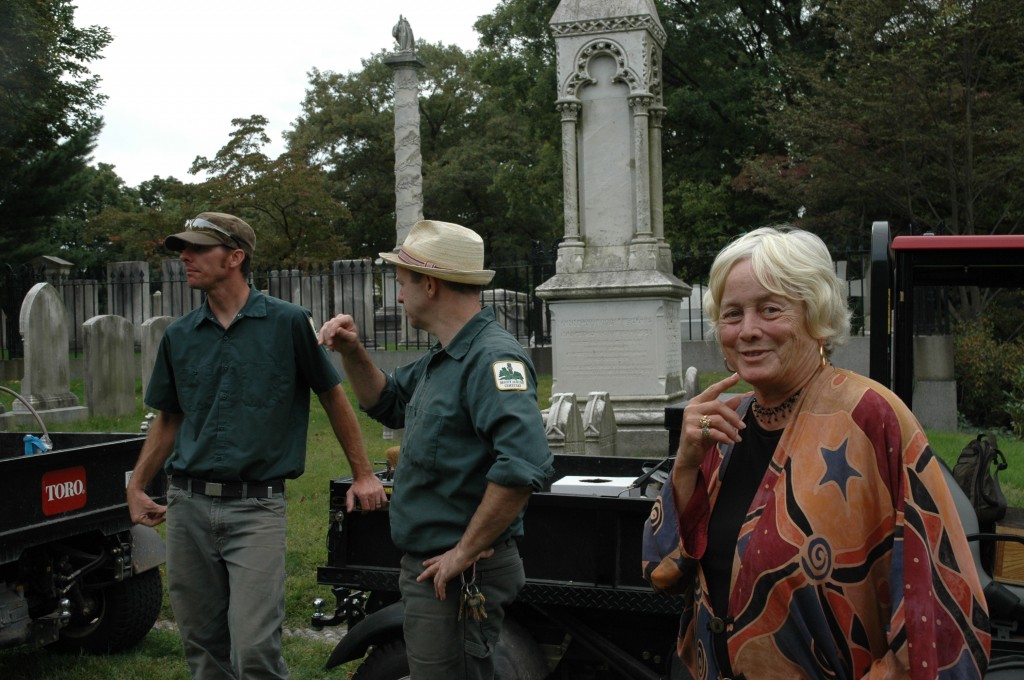
Blanche in discussion with Mount Auburn Preservation staff at the Cemetery in September 2009.
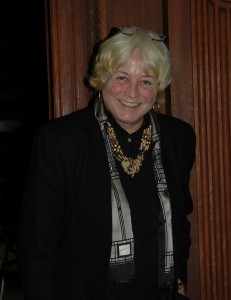
Since it was first published in 1989, Blanche M. G. Linden’s Silent City on a Hill has been the cornerstone in our understanding of the 19th century rural cemetery movement and Mount Auburn’s leadership role in that movement. Silent City provided the intellectual context for the 1993 Master Plan that has guided stewardship of the Cemetery for the past 20 years.
– Shary Berg, Author of The Mount Auburn Cemetery Historic Landscape Report, 1993
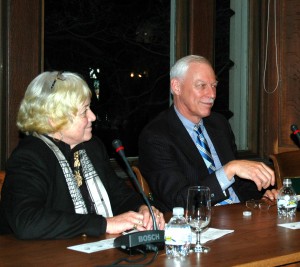 Blanche’s magisterial Silent City was just being published when I arrived as the new President of Mount Auburn in the spring of 1988. What a gift it was to me, a new chief executive trying to understand the Cemetery’s place in American history. And what a gift Blanche herself was to us, always an invaluable resource throughout my 20-year tenure at Mount Auburn as we expanded our interpretive materials. Her scholarship put them on a high plane indeed. Ever ready to set us straight when we got a fact wrong, she was nonetheless always supportive in our endeavors to expand the public’s knowledge of the Cemetery and its importance, both as an historic landscape and the institutional model for cemeteries throughout the country. Working with her to bring forth the expanded revision of Silent City was one of my proudest accomplishments. And Blanche’s work not only enriched Mount Auburn, it also enlightened many of our fellow historic, rural cemeteries, particularly Spring Grove in Cincinnati. She leaves a truly lasting legacy.
Blanche’s magisterial Silent City was just being published when I arrived as the new President of Mount Auburn in the spring of 1988. What a gift it was to me, a new chief executive trying to understand the Cemetery’s place in American history. And what a gift Blanche herself was to us, always an invaluable resource throughout my 20-year tenure at Mount Auburn as we expanded our interpretive materials. Her scholarship put them on a high plane indeed. Ever ready to set us straight when we got a fact wrong, she was nonetheless always supportive in our endeavors to expand the public’s knowledge of the Cemetery and its importance, both as an historic landscape and the institutional model for cemeteries throughout the country. Working with her to bring forth the expanded revision of Silent City was one of my proudest accomplishments. And Blanche’s work not only enriched Mount Auburn, it also enlightened many of our fellow historic, rural cemeteries, particularly Spring Grove in Cincinnati. She leaves a truly lasting legacy.
– Bill Clendaniel, President Emeritus, Mount Auburn Cemetery
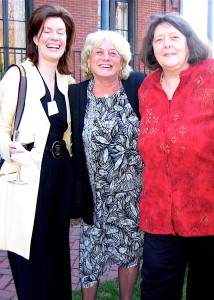
Blanche with Meg Winslow and Janet Heywood in 2006
Blanche spoke eloquently for the “Silent City.” Her programs and walking tours were always popular and at each event visitors and staff learned something new. Blanche helped us appreciate how Mount Auburn reflected the culture of its founding period and gave us insights to understand the changes that occurred over time. We shall miss her but hear her voice when we visit the Cemetery, read her books and remember her spirit.
– Janet Heywood, Former Vice President of Interpretive Programs, Mount Auburn Cemetery
Our knowledge and understanding of Mount Auburn Cemetery and the rural cemetery movement begins with historian Blanche M.G. Linden. In fact, Blanche was the first scholar to discover and study Mount Auburn Cemetery’s archival collection of institutional records. Beginning with her 1981 doctoral thesis in the Program of History of American Civilization at Harvard, and continuing with her definitive publication Silent City on a Hill, as well as through countless articles and lectures across the country, Blanche articulated the social and historical ideas that contributed to the founding of Mount Auburn and the rural cemetery movement in this country. With penetrating scholarship, Blanche made the most important point of all: that these designed landscapes have meaning. Thank you Blanche.
– Meg L. Winslow, Curator of Historical Collections, Mount Auburn Cemetery
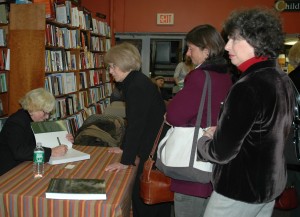
Blanche signs her book for fans at the Harvard Book Store
Blanche will be sorely missed by all who had the pleasure of knowing her especially those associated with the academic community. Along with her valuable contribution to the field her passion and dedication to the study of cemeteries and gravemarkers have served as an inspiration and model of excellence for those who follow.
– J. Joseph Edgette, Ph.D. Chair, American Culture Association
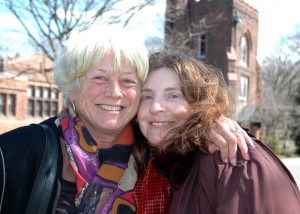
Blanche and Elise Ciregna at Mount Auburn Cemetery in 2006
Blanche’s brilliant and innovative research broke new ground in landscape studies. (She would appreciate the pun.) Almost single-handedly, as Mount Auburn inspired the rural cemetery movement in nineteenth century America, Blanche, through her work, inspired scores of scholars to study nineteenth century cemeteries as complex and layered landscapes, moving investigations of American burial practice well beyond intensive studies of eighteenth century gravestones. By deftly weaving the different strands of historical investigation—cultural, social, artistic, literary, and political—into a seamless whole, Blanche shed light on a topic previously largely ignored, and made cemetery landscapes worth studying not just as burial grounds, but as markers of human endeavor, progressive thought, and artistic effort. Considering not just the landscape, but its material culture and furnishings, Blanche gave voice to American nineteenth century people, their concerns, their collective vision and hopes, and did it all in a seemingly effortless, accessible way, the mark of a true scholar.
– Elise M. Ciregna, Cultural Historian
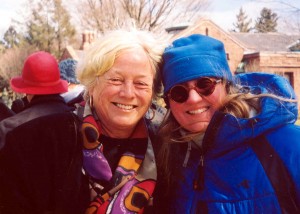
Blanche and Jen Johnston at Mount Auburn Cemetery, 2006
Blanche was always supportive and encouraging to younger writers, artists and photographers inspired by the beauty of Mount Auburn.
– Jennifer Johnston, Webmaster, Media & Imaging Coordinator, Mount Auburn Cemetery
Leave a Reply